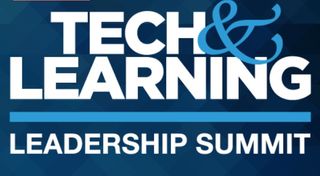Tech & Learning's March Leadership Summit in Washington, D.C., will feature numerous edtech topics and discussions. Click here for more info and to apply to attend.
As part of the T&L Leadership Summit, held March 13 and 14 in Washington, D.C., attendees will visit Garfield Elementary School, one of three globally recognized Microsoft Schools in District of Columbia Public Schools. Summit attendees will learn how Garfield delivers a blended learning and inquiry-based instructional program that aims to create a personalized learning environment for all students.
“We had been doing basic blended learning, and when we switched to our current approach, it allowed us to better personalize instruction, so the students felt like we took their needs into consideration and the parents felt as if we were designing instruction specifically for their kids,” says Kennard Branch, principal of Garfield Elementary. “Attendance has improved because the students are more excited about coming to school and learning. They’re not doing the same thing day after day, and it’s more engaging. They are now using computers like you and I do rather than just punching buttons.”
Visitors to Garfield Elementary will see computer science classes using Sphero for coding and driving robots up and down the halls. Students now create presentations in Sway and PowerPoint, and are building skills that will help them compete in the workplace. “There’s no technology grade, no way to measure it,” says Branch. “But at the end of day, the kids need these skills to help improve their critical thinking, which will get them jobs in the future.”
When Garfield was implementing its approach to using edtech, Branch says they discovered they had to start slow. The first attempt, which included trying to integrate the entire school at once, wasn’t successful because learning new technology and new content at the same time was too much of a challenge. In the second attempt, Branch approached implementation with only one teacher who was ready to hit the ground running.
“We were able to really support her because it was one teacher,” he says. “So that became a good practice run in which we got to see all the issues and mistakes, and then we learned how to address them.”
They also discovered that they needed to train a group of students who could be leaders and help provide technical support. They became Microsoft trained so they could give their peers support and free up the teacher. Once the approach was proven to be successful, Branch slowly opened up the implementation to other teachers and let them come on board as they were comfortable. Adding an IT specialist to the building to address the bigger technical issues also reduced teacher and staff frustration.
“One key thing for me is that we had to not be afraid to take the risk,” says Branch. “A principal is supposed to be an advocate, and the challenge for me was balance making progress on test scores versus what’s the best for the kids in the long run.”
Learn more and apply to attend a Tech & Learning Leadership Summit

